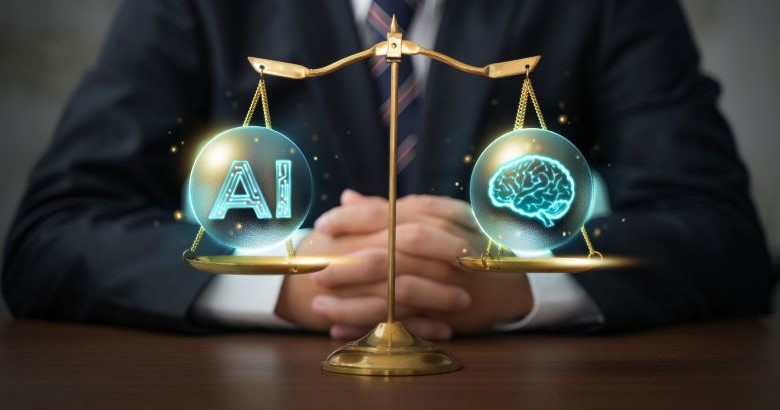By Megan Torrance and Lauren Milstid
We’re well past the moment of wondering if AI will affect learning and development (L&D). It’s already here—showing up in tools, workflows, learner experiences, and even the work itself.
But when everything’s shifting all at once, it’s hard to know where to start.
We’ve found that it helps to explore AI in L&D through three distinct but overlapping zones of impact. These AI Impact Zones give us a way to name what’s happening, plan where we’re going, and take more strategic steps forward.
Each zone reflects a different way AI is changing how we design, deliver, and drive learning. They’re not a roadmap or maturity model; they’re a lens. And in most organizations, all three are in motion at the same time.
Let’s break them down.
Zone 1: AI in L&D’s workflow and productivity
This is where most teams encounter AI first, embedded in tools we already use or added to our daily routines to speed up repetitive tasks.
It often starts with writing support, image generation, video narration, translation, and summarization. AI takes on the heavy lift in early content development—drafting copy, generating assets, or tidying up SME input. From there, it stretches into evaluation and analytics: summarizing learner feedback, identifying patterns, or flagging trends we might’ve missed in the spreadsheet scroll.
It’s easy to focus on efficiency. Faster timelines. Smoother QA. Automated alt text. All good things. But the real shift in this zone comes when AI frees us up to focus on more strategic contributions. When it handles the first draft of a storyboard or the first pass at a dataset, we can spend our energy designing learning that actually drives behavior change.
At TorranceLearning, we’ve built internal AI partners to suggest performance outcomes from a body of SME content, generate client-specific assessments, draft alt-text, and assess consistency against defined standards. These tools help us work more reliably at speed and scale. They clear the deck so we can stay focused on the work that matters. You’ve probably done the same.
And this is also where we start to feel the tension. AI can amplify human productivity, but it can also prompt hard conversations about headcount, roles, and value. “Doing more with less” is a seductive phrase, especially when the “more” includes strategic thinking, collaboration, and leadership. The goal isn’t to protect roles. It’s to focus our time and talent on where they have the most impact.
Here are some ways AI is already showing up in learning design tasks:
- Learning design tools that suggest content outlines, learning objectives, assessments, or visual layouts
- Content creation tools with generative AI that produce video, voiceover, or images
- LMS or LXP platforms with AI features that support content tagging, translation, or summarization
- Feedback analysis tools that identify patterns, flag outliers, or summarize survey data
Zone 2: AI in the learner experience
Here, the focus shifts from behind-the-scenes development to the learner’s actual experience.
What’s powerful in this zone is how seamlessly AI can enhance that experience. It adapts in real time to individual needs, behaviors, and progress, without adding complexity or friction.
This is where adaptive learning paths, AI role-play partners, and smart nudges start to show up in digital platforms. It’s where learning gets personalized and adaptive—not just to a role or job function, but to the individual’s progress, behavior, preferences, and needs.
AI technology is evolving quickly, but it’s not plug-and-play. These tools only work well when the content strategy, data structure, and learning experience design are sound. This is where the old rule applies: garbage in, garbage out. AI might personalize or optimize the input, but if the input is weak, the output won’t be much better.
We’ve explored this zone through projects like our DemoFest-winning Emma AI Case Challenge, where we custom-built AI interactions into a digital learning experience. Learners respond to a scenario using free text, which is compared against expert-vetted responses to generate rich, AI-powered feedback.
Compared to a typical multiple-choice interaction, it took more from our SMEs to get this right—but the learning value has been worth it. Learners engage more deeply and receive feedback that feels personal, relevant, and actionable.
We then layered on AI analysis of learner progress and response data in a dashboard that uses generative AI to summarize insights and offer tailored recommendations for both learners and course owners.
If this zone is active in your organization, AI might show up like this:
- AI coaches that give targeted feedback after branching scenarios
- Role-play bots that provide real-time feedback and skill practice
- Dashboards that flag learner struggles before the final assessment
- Performance support tools that surface relevant content at the moment of need
- Just-in-time tools that suggest tips or next steps based on task context
- Adaptive systems that adjust content, pacing, or difficulty based on behavior
- Learning platforms that personalize experiences based on learner progress and preferences
Zone 3: AI in the business (and what it means for L&D)
When AI changes how work gets done, it also changes what people need to learn. This zone is the biggest and most disruptive, and it’s often unfolding outside L&D’s immediate line of sight.
In many organizations, teams are already adopting AI-powered tools to support core parts of their work. And in most cases, that shift happened before the emergence of GenAI.
Sure, sometimes people need help using the tool. But more often, AI changes the work itself—and that means our onboarding, behavior change, and performance strategies need to evolve.
We also need to rethink our own role. AI is changing how we define good performance. It’s changing how managers coach. It’s changing what skills matter, and when. And L&D has a critical role in helping people navigate that change with clarity and confidence.
To support the shift, we need to recognize where and how these changes are already unfolding:
- Shifts in performance expectations that require earlier, faster upskillingsometimes before L&D is even looped in
- Managers who need new coaching strategies or are asking for support in developing AI fluency for themselves and their teams
- Product teams using tools with AI-assisted insight generation to automate analysis and accelerate decision-making
- Algorithms in industries like insurance or finance review large volumes of claims or transactions to detect anomalies and prevent fraud
- AI tools in supply chain systems forecast disruptions and recommend changes to production or delivery plans
Put the zones to work
These zones aren’t theoretical. They’re where the work is already happening.
If you’re feeling overwhelmed, start small. Pick one project or workflow from each zone and ask:
- How is AI showing up here today?
- Where could it enhance, accelerate, or shift how we approach this?
- What would success look like, considering people, process, and impact?
AI won’t transform L&D on its own. It’s a toolset, and your strategy is what gives it purpose. But when we use these zones to make sense of the changes and chart our course through them, we position ourselves not just to keep up, but to lead.
The opportunity isn’t just to work faster—it’s to work smarter, with greater intention and impact. These zones are already in motion. The question is: how will you show up in them?
Image creadit: Sansert Sangsakawrat











